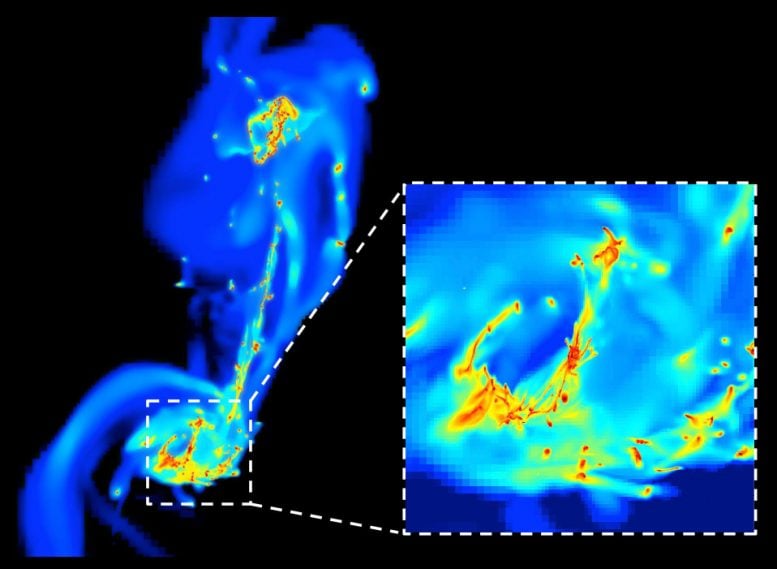
A frame from the simulation of the two colliding ‘Antennae’ galaxies. Here the galaxies are re-shaped after their first encounter. High resolution allows the astrophysicists to explore the smallest details. Stars are formed in the densest regions (yellow and red) under the effect of compressive turbulence. Star formation is more efficient here than in normal galaxies like our Milky Way. Credit: F. Renaud / CEA-Sap.
Astrophysicists used computer simulations of a typical galaxy merger to show that collisions change the nature of the turbulence in the galactic gas of galaxies, leading to a surge of star formation.
Using state-of-the-art computer simulations, a team of French astrophysicists have for the first time explained a long-standing mystery: why surges of star formation (so-called ‘starbursts’) take place when galaxies collide. The scientists, led by Florent Renaud of the AIM institute near Paris in France, publish their results in a letter to the journal Monthly Notices of the Royal Astronomical Society.
Stars form when the gas inside galaxies becomes dense enough to collapse, usually under the effect of gravitation. When galaxies merge, however, this increases the random motions of their gas generating whirls of turbulence which should hinder the collapse of the gas. Intuitively this turbulence should then slow down or even shut down the formation of stars, but in reality astronomers observe the opposite.
The new simulations were made using two of the most powerful supercomputers in Europe. The team modeled a galaxy like our own Milky Way and the two colliding Antennae galaxies (see e.g. this Hubble Space Telescope image of these objects).
For the Milky Way type galaxy, the astrophysicists used 12 million hours of time on the supercomputer Curie, running over a period of 12 months to simulate conditions across 300,000 light-years. For the Antennae type system, the scientists used the supercomputer SuperMUC to cover 600,000 light-years. This time they needed 8 million hours of computational time over a period of 8 months. With these enormous computing resources the team were able to model the systems in great detail, investigating details that were only a fraction of a light year across.
By simulating the impact of the Antennae collision and merger on material 1000 times less massive than anything attempted before and comparing this with the Milky Way model, Florent, and his team were able to demonstrate that the collision changes the nature of the turbulence in the galactic gas. Instead of whirling around, the gas enters a state where compression is more likely. So when two galaxies collide, this generates an excess of dense gas that collapses into stars – and both galaxies experience a starburst.
Florent comments: “This is a big step forward in our understanding of star formation, something only made possible by the similarly major and parallel advances in computing power. These systems are helping us unlock the nature of galaxies and their contents in ever more detail, helping astronomers to slowly assemble their complete history.”
Reference: “Starbursts triggered by intergalactic tides and interstellar compressive turbulence” by Florent Renaud, Frédéric Bournaud, Katarina Kraljic and Pierre-Alain Duc, 2 May 2014, MNRAS.
DOI: 10.1093/mnrasl/slu050
arXiv: 1403.7316

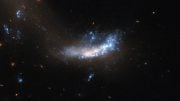



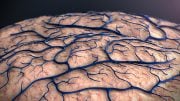
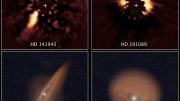

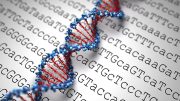
Be the first to comment on "Astrophysicists Reveal Why Surges of Star Formation Take Place When Galaxies Collide"